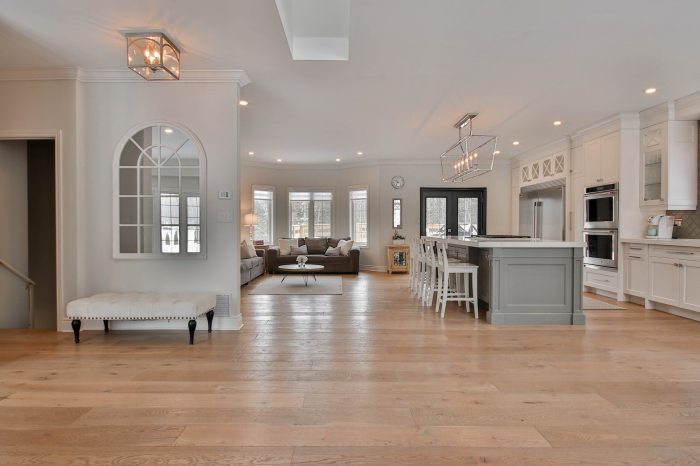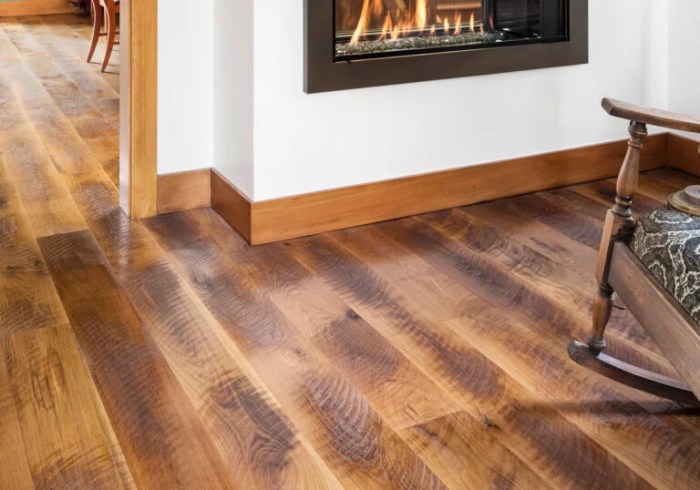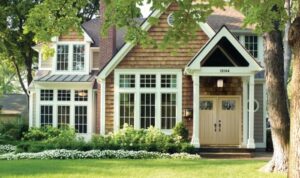As best flooring for home remodel takes center stage, this opening passage beckons readers into a world crafted with good knowledge, ensuring a reading experience that is both absorbing and distinctly original.
When it comes to remodeling your home, selecting the right flooring is crucial for achieving the desired aesthetic and functionality. Let's dive into the various options available and factors to consider for a successful home renovation project.
Types of Flooring
When it comes to choosing the right flooring for your home remodel, there are several options to consider. Each type of flooring has its own unique characteristics, pros, and cons. Let's take a closer look at some popular choices:
Hardwood Flooring
Hardwood flooring is a classic choice that adds warmth and elegance to any room. Here are some pros and cons to consider:
- Pros:
- Timeless and durable
- Increases the value of your home
- Can be sanded and refinished multiple times
- Cons:
- Expensive upfront cost
- Prone to scratches and dents
- Not recommended for areas with high moisture
Laminate vs. Vinyl Flooring
When comparing laminate and vinyl flooring, durability and cost are key factors to consider. Here's a breakdown:
- Laminate Flooring:
- Durable and scratch-resistant
- Easy to install
- Usually more affordable than hardwood
- Vinyl Flooring:
- Waterproof and moisture-resistant
- Low maintenance and easy to clean
- Available in a wide range of styles and colors
Tiles for Specific Areas
Tiles are a versatile option that can be used in various areas of the house for different benefits. Here's why tiles are a great choice:
- In the Kitchen:
- Easy to clean and maintain
- Resistant to stains and spills
- Durable and long-lasting
- In the Bathroom:
- Water-resistant and ideal for wet areas
- Prevents mold and mildew growth
- Adds a sleek and stylish look
Considerations for Choosing Flooring

When selecting the best flooring for a home remodel, there are several factors to consider to ensure you make the right choice. Matching flooring to different rooms based on functionality, selecting flooring that complements the overall home design, and considering maintenance requirements for each type of flooring are crucial aspects to keep in mind.
Matching Flooring to Different Rooms
It is important to choose flooring that suits the specific needs of each room in your home. For example, high-traffic areas like the living room or kitchen may require more durable flooring such as hardwood or tile, while carpet may be more suitable for bedrooms for added comfort.
Selecting Flooring that Complements Home Design
Consider the overall design aesthetic of your home when choosing flooring. For a modern look, sleek hardwood or laminate flooring may be ideal, while a more rustic design could benefit from the warmth of carpet or natural stone tiles.
Importance of Maintenance Requirements
Each type of flooring comes with its own maintenance requirements. For instance, hardwood floors may need refinishing over time, while carpet requires regular vacuuming and professional cleaning. Consider your lifestyle and maintenance preferences when selecting flooring to ensure it remains in top condition for years to come.
Budget-Friendly Flooring Options
When renovating your home on a budget, choosing cost-effective flooring options can help you save money without compromising on quality. Here are some tips and affordable flooring materials to consider:
Laminate Flooring
Laminate flooring is a popular choice for budget-conscious homeowners as it is durable, easy to install, and comes in a variety of styles that mimic hardwood, tile, or stone. It is also easy to clean and maintain, making it a practical choice for busy households.
Vinyl Plank Flooring
Vinyl plank flooring is another affordable option that closely resembles hardwood or tile but comes at a fraction of the cost. It is waterproof, easy to install, and can withstand high traffic areas, making it ideal for kitchens, bathrooms, and living spaces.
Engineered Wood Flooring
Engineered wood flooring offers the look of real hardwood but is more budget-friendly. It consists of a thin layer of hardwood on top of plywood, making it more affordable while still providing the aesthetic appeal of hardwood floors. It is also more resistant to moisture and temperature changes, making it suitable for various rooms in the house.
DIY Installation
One way to save on labor costs is by opting for DIY installation. Many budget-friendly flooring options are designed for easy installation, allowing homeowners to tackle the project themselves. However, it is important to follow manufacturer instructions carefully to ensure proper installation and longevity of the flooring.
Environmental Impact and Sustainability

When choosing flooring for a home remodel, it's essential to consider the environmental impact and sustainability of the materials. Opting for eco-friendly flooring options not only benefits the environment but also contributes to a healthier indoor living space for you and your family.
Impact of Different Flooring Materials on the Environment
- Hardwood: While hardwood flooring is durable and long-lasting, it often involves deforestation and has a significant impact on natural habitats.
- Laminate: Laminate flooring is made from composite wood materials and emits volatile organic compounds (VOCs) during production.
- Carpet: Traditional carpets are made from synthetic materials like nylon, which are non-biodegradable and can release harmful chemicals into the air.
- Bamboo: Bamboo flooring is a sustainable option as bamboo is a fast-growing renewable resource that regenerates quickly.
- Cork: Cork flooring is harvested from the bark of cork oak trees without harming the tree, making it a sustainable and eco-friendly choice.
Certifications for Sustainable Flooring Products
- Forest Stewardship Council (FSC): Look for FSC-certified wood flooring to ensure it comes from responsibly managed forests.
- Cradle to Cradle (C2C): Products with C2C certification are designed for recyclability and environmental sustainability.
- Greenguard: Greenguard certification ensures that flooring products meet strict chemical emissions limits, promoting healthier indoor air quality.
Renewable and Recyclable Flooring Materials
- Reclaimed Wood: Using reclaimed wood for flooring reduces the demand for new materials and gives old wood a new life.
- Linoleum: Made from natural materials like linseed oil, cork dust, and wood flour, linoleum is biodegradable and recyclable.
- Recycled Glass Tiles: Glass tiles made from recycled glass are a sustainable option that adds a unique touch to your home.
- Rubber: Rubber flooring is durable, easy to maintain, and can be recycled at the end of its life cycle.
Outcome Summary
In conclusion, choosing the best flooring for your home remodel involves a careful balance of practicality, aesthetics, and budget considerations. With the right information and guidance, you can transform your living space into a stylish and comfortable sanctuary.
Clarifying Questions
What are the most durable flooring options for high-traffic areas?
Hardwood and tile flooring are excellent choices for areas prone to heavy foot traffic due to their durability and longevity.
Are laminate and vinyl flooring suitable for kitchen and bathroom remodels?
Both laminate and vinyl flooring are water-resistant and durable, making them ideal choices for kitchen and bathroom renovations.
How can I find budget-friendly flooring options without compromising quality?
You can explore options like laminate, vinyl, and engineered wood flooring, which offer cost-effective alternatives to pricier materials like hardwood.
What are some eco-friendly flooring materials that I can consider for a sustainable home remodel?
Bamboo, cork, and reclaimed wood are eco-friendly options that are renewable and contribute to a greener home environment.






